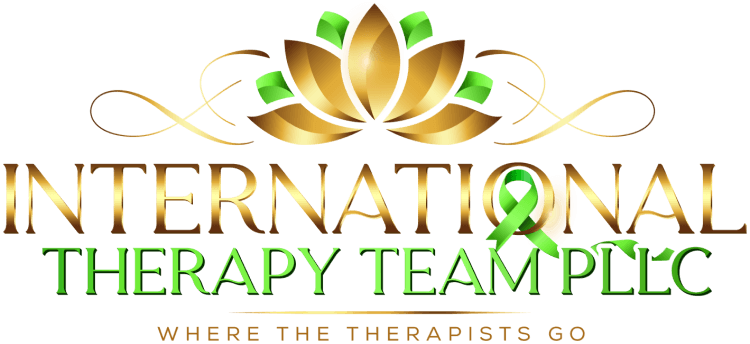Effective communication is at the heart of mental health care. Whether you’re a mental health professional or someone supporting a loved one, mastering communication skills can significantly improve outcomes. Let’s explore some key communication skills that make a real difference.
1. Building Trust with Active Listening
Active listening involves giving your full attention to the speaker, ensuring they feel heard and understood. It’s a cornerstone of building trust in any therapeutic relationship. To practice active listening effectively, it’s important to remove distractions and focus on the speaker’s words, tone, and body language. A crucial aspect of active listening is providing feedback through paraphrasing or summarizing what the speaker has said, which not only shows understanding but also encourages them to share more openly.
Importantly, active listening also means resisting the urge to interrupt or immediately offer solutions. Often, people are looking for a listening ear rather than advice. Encouraging this space can greatly help individuals work through their own thoughts and emotions, leading to better mental health outcomes. As listeners, demonstrating patience and providing a safe environment fosters trust and opens pathways to meaningful connection.
2. The Art of Asking Open-Ended Questions
Open-ended questions encourage dialogue and provide valuable insights into a person’s thoughts and feelings. They help individuals express themselves more freely without feeling judged. These types of questions often start with ‘how’, ‘what’, ‘where’, or ‘why’, inviting the person to think deeper and articulate their thoughts at length. For mental health practitioners, this method can uncover underlying issues that may not be immediately visible through direct queries.
Using open-ended questions in conversations can enrich the interaction by moving beyond yes-or-no answers and encouraging storytelling. In a therapeutic context, it becomes a tool that helps validate the individual’s thoughts and fosters an environment of mutual respect and understanding, thereby supporting the healing process in a sensitive and informed manner.
3. Empathy as a Communication Tool
Demonstrating empathy involves understanding and sharing the feelings of others. It’s essential for creating a supportive and nurturing environment in mental health settings. Empathic communication requires tuning into the emotional state of the speaker and responding in a way that reinforces their feeling of being understood. This can involve simply acknowledging a person’s feelings or using affirming language to support them through difficult emotions.
The role of empathy in communication cannot be overstated. It helps in building therapeutic rapport, which is fundamental for effective mental health treatments. However, empathy doesn’t mean taking on the other person’s emotions as your own; instead, it’s about demonstrating genuine concern and wanting to understand their experience without judgment.
4. Practicing Patience and Tolerance
Conversations around mental health can be challenging. Patience and tolerance are vital for allowing individuals the space to express themselves at their own pace. In a mental health context, it’s important to recognize that each person processes emotions and experiences differently, and speed should not be prioritized over quality of dialogue. Practitioners must remain aware of their body language and tone, which can inadvertently communicate impatience or judgment, dampening a person’s willingness to share.
Providing a non-judgmental space where an individual feels secure to explore and discuss their mental health issues is a crucial part of nurturing recovery and growth. By showing patience, mental health professionals can build more effective communication channels, which are instrumental in long-term mental health care.
5. Communicating with Clarity and Precision
Clear and precise communication prevents misunderstandings and ensures that important information is conveyed accurately, which is crucial in mental health care. Professionals must articulate their thoughts and instructions in a straightforward manner while simultaneously ensuring that clients fully comprehend the discussion. This approach reduces confusion and fosters a more cohesive working relationship.
By keeping messages simple and avoiding jargon unless necessary, mental health specialists can facilitate better communication with clients. Furthermore, asking clients to repeat back what was discussed or providing written summaries can be effective strategies to ensure comprehension and reinforce the communication.
6. Nonverbal Cues and Their Impact
Nonverbal communication, such as body language and facial expressions, plays a significant role in understanding and responding to mental health needs. Therapists and caregivers alike can glean important information from a person’s posture, eye contact, and gestures, which may reveal more than their words do. It’s important to approach nonverbal cues in conjunction with verbal communication to get a full picture of the individual’s emotional state.
Being aware of one’s own nonverbal signals is as crucial as interpreting those of others. For example, maintaining an open posture and avoiding crossing arms can make one appear more approachable, enhancing the comfort level of the person being communicated with. Thus, both recognizing and responsibly using nonverbal cues is an integral part of enriching mental health interactions.
7. Validation and Affirmation
Affirming a person’s feelings and experiences is key to providing support. Validation lets people know their feelings are legitimate and important. This practice embodies both acknowledgment and acceptance of a person’s thoughts and feelings, irrespective of whether one agrees with them. In a therapeutic setting, validating a client’s emotions increases their self-worth and helps them accept their feelings, thereby laying a foundation for constructive change.
Creates a secure space where individuals feel comfortable expressing their thoughts without fear of dismissal or invalidation, fostering mental and emotional growth. Validation can be as straightforward as nodding, making brief affirmations like ‘I understand’, or more intricate paraphrasing to show deep understanding.
8. Timely Feedback and Encouragement
Providing timely feedback and encouragement can motivate individuals and reinforce positive behaviors, fostering a sense of progress and achievement. In mental health care, this involves recognizing small victories and efforts, which can significantly boost a person’s confidence and willingness to continue therapy or recommended activities.
Timely feedback is not only about recognizing achievements but also about gently guiding and redirecting when necessary. Constructive criticism delivered with empathy is crucial in helping individuals understand areas for improvement without feeling demotivated. Encouragement serves as a pillar that supports individuals through challenging times and reinforces the therapeutic alliance.
9. Understanding Cultural Sensitivity
Cultural sensitivity involves being aware of and respecting diverse backgrounds, beliefs, and experiences, which is crucial for effective communication in mental health. It recognizes the role of cultural factors in shaping perceptions of mental illness and treatment and helps tailor communication strategies accordingly.
By showing cultural sensitivity, mental health practitioners can create an inclusive environment that respects and upholds the dignity and worth of every person. Further, understanding cultural contexts can improve diagnostic accuracy and enhance the responsiveness of therapeutic interventions, thereby promoting equitable mental health care.
10. Setting Healthy Boundaries
Establishing and respecting boundaries is essential for maintaining a healthy, professional relationship in mental health care. It involves clarity about personal limits, the roles each party will play, and the expectations within therapeutic exchanges.
Healthy boundaries prevent burnout and ensure mental health professionals can provide sustainable support. For clients, clear boundaries ensure their autonomy is respected and that they move forward with a realistic understanding of the therapeutic dynamics.
11. Incorporating Humor Appropriately
Used appropriately, humor can diffuse tension and create a more relaxed atmosphere, but it must be applied with sensitivity to avoid misunderstanding. By incorporating humor into interactions, therapists can alleviate stress and improve rapport with clients, creating a more positive and engaging therapy session.
Nevertheless, practitioners must be vigilant not to use humor that may be perceived as dismissive or disrespectful, as this can undermine trust. It’s essential that humor be rooted in respect and understanding, recognizing the nuances of each unique situation.
12. The Importance of Reflection
Reflection involves thinking back on interactions to better understand and improve future communication. It helps refine skills over time, leading to more effective mental health support. By analyzing what was said, how it was received, and the outcomes derived, practitioners can adjust their approaches to suit the needs of their clients more effectively.
Reflection is not limited to self-evaluation. Seeking feedback from peers or supervisors can provide additional insights into communication styles and their effects, inspiring continuous professional growth. Regular reflection ensures that mental health professionals remain adaptable, empathetic, and effective in their supportive roles.





